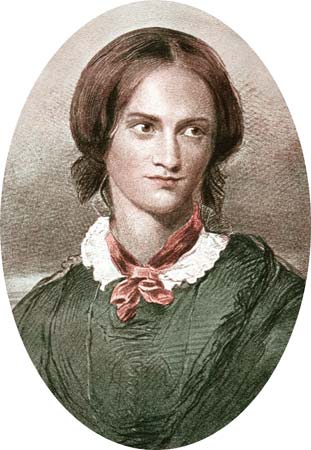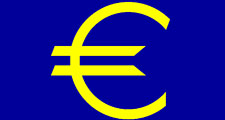Romanticism, attitude or intellectual orientation that characterized many works of literature, painting, music, architecture, criticism, and historiography in Western civilization over a period from the late 18th to the mid-19th century. Romanticism can be seen as a rejection of the precepts of order, calm, harmony, balance, idealization, and rationality that typified Classicism in general and late 18th-century Neoclassicism in particular. It was also to some extent a reaction against the Enlightenment and against 18th-century rationalism and physical materialism in general. Romanticism emphasized the individual, the subjective, the irrational, the imaginative, the personal, the spontaneous, the emotional, the visionary, and the transcendental.
- A discussion of the key events and personalities of the late 18th- and early 19th-century Romantic …Encyclopædia Britannica, Inc.
Among the characteristic attitudes of Romanticism were the following: a deepened appreciation of the beauties of nature; a general exaltation of emotion over reason and of the senses over intellect; a turning in upon the self and a heightened examination of human personality and its moods and mental potentialities; a preoccupation with the genius, the hero, and the exceptional figure in general, and a focus on his passions and inner struggles; a new view of the artist as a supremely individual creator, whose creative spirit is more important than strict adherence to formal rules and traditional procedures; an emphasis upon imagination as a gateway to transcendent experience and spiritual truth; an obsessive interest in folk culture, national and ethnic cultural origins, and the medieval era; and a predilection for the exotic, the remote, the mysterious, the weird, the occult, the monstrous, the diseased, and even the satanic.
Literature

Romanticism proper was preceded by several related developments from the mid-18th century on that can be termed Pre-Romanticism. Among such trends was a new appreciation of the medieval romance, from which the Romantic movement derives its name. The romance was a tale or ballad of chivalric adventure whose emphasis on individual heroism and on the exotic and the mysterious was in clear contrast to the elegant formality and artificiality of prevailing Classical forms of literature, such as the French Neoclassical tragedy or the English heroic couplet in poetry. This new interest in relatively unsophisticated but overtly emotional literary expressions of the past was to be a dominant note in Romanticism.
Romanticism in English literature began in the 1790s with the publication of the Lyrical Ballads of William Wordsworth and Samuel Taylor Coleridge. Wordsworth’s “Preface” to the second edition (1800) of Lyrical Ballads, in which he described poetry as “the spontaneous overflow of powerful feelings,” became the manifesto of the English Romantic movement in poetry. William Blake was the third principal poet of the movement’s early phase in England. The first phase of the Romantic movement in Germany was marked by innovations in both content and literary style and by a preoccupation with the mystical, the subconscious, and the supernatural. A wealth of talents, including Friedrich Hölderlin, the early Johann Wolfgang von Goethe, Jean Paul, Novalis, Ludwig Tieck, A.W. and Friedrich Schlegel, Wilhelm Heinrich Wackenroder, and Friedrich Schelling, belong to this first phase. In Revolutionary France, the vicomte de Chateaubriand and Mme de Staël were the chief initiators of Romanticism, by virtue of their influential historical and theoretical writings.
- Germaine de Staël, portrait by Jean-Baptiste Isabey, 1810; in the Louvre, ParisGiraudon/Art Resource, New York
The second phase of Romanticism, comprising the period from about 1805 to the 1830s, was marked by a quickening of cultural nationalism and a new attention to national origins, as attested by the collection and imitation of native folklore, folk ballads and poetry, folk dance and music, and even previously ignored medieval and Renaissance works. The revived historical appreciation was translated into imaginative writing by Sir Walter Scott, who is often considered to have invented the historical novel. At about this same time English Romantic poetry had reached its zenith in the works of John Keats, Lord Byron, and Percy Bysshe Shelley.
- Sir Walter Scott, detail of an oil painting by Sir Edwin Henry Landseer, 1824; in the National …Courtesy of The National Portrait Gallery, London
A notable by-product of the Romantic interest in the emotional were works dealing with the supernatural, the weird, and the horrible, as in Mary Shelley’s Frankenstein and works by C.R. Maturin, the Marquis de Sade, and E.T.A. Hoffmann. The second phase of Romanticism in Germany was dominated by Achim von Arnim, Clemens Brentano, J.J. von Görres, and Joseph von Eichendorff.
- Mary Wollstonecraft Shelley, oil on canvas by Richard Rothwell, first exhibited 1840; in the …© AISA—Everett/Shutterstock.com

By the 1820s Romanticism had broadened to embrace the literatures of almost all of Europe. In this later, second, phase, the movement was less universal in approach and concentrated more on exploring each nation’s historical and cultural inheritance and on examining the passions and struggles of exceptional individuals. A brief survey of Romantic or Romantic-influenced writers would have to include Thomas De Quincey, William Hazlitt, and the Brontë sisters in England; Victor Hugo, Alfred de Vigny, Alphonse de Lamartine, Alfred de Musset, Stendhal, Prosper Mérimée, Alexandre Dumas (Dumas Père), and Théophile Gautier in France; Alessandro Manzoni and Giacomo Leopardi in Italy; Aleksandr Pushkin and Mikhail Lermontov in Russia; José de Espronceda and Ángel de Saavedra in Spain; Adam Mickiewicz in Poland; and almost all of the important writers in pre-Civil War America.
- Aleksandr Sergeyevich Pushkin, oil on canvas by Vasily Tropinin, 1827; in the National Pushkin …Hulton Archive/Getty Images
Visual arts
In the 1760s and ’70s a number of British artists at home and in Rome, including James Barry, Henry Fuseli, John Hamilton Mortimer, and John Flaxman, began to paint subjects that were at odds with the strict decorum and classical historical and mythological subject matter of conventional figurative art. These artists favoured themes that were bizarre, pathetic, or extravagantly heroic, and they defined their images with tensely linear drawing and bold contrasts of light and shade. William Blake, the other principal early Romantic painter in England, evolved his own powerful and unique visionary images.
- Pity, colour print finished in pen and watercolour by William Blake, …Courtesy of the trustees of the Tate Gallery, London; photographs, G. Robertson, A.C. Cooper Ltd.
In the next generation the great genre of English Romantic landscape painting emerged in the works of J.M.W. Turner and John Constable. These artists emphasized transient and dramatic effects of light, atmosphere, and colour to portray a dynamic natural world capable of evoking awe and grandeur.
In France the chief early Romantic painters were Baron Antoine Gros, who painted dramatic tableaus of contemporary incidents of the Napoleonic Wars, and Théodore Géricault, whose depictions of individual heroism and suffering in The Raft of the Medusa and in his portraits of the insane truly inaugurated the movement around 1820. The greatest French Romantic painter was Eugène Delacroix, who is notable for his free and expressive brushwork, his rich and sensuous use of colour, his dynamic compositions, and his exotic and adventurous subject matter, ranging from North African Arab life to revolutionary politics at home. Paul Delaroche, Théodore Chassériau, and, occasionally, J.-A.-D. Ingres represent the last, more academic phase of Romantic painting in France. In Germany Romantic painting took on symbolic and allegorical overtones, as in the works of P.O. Runge. Caspar David Friedrich, the greatest German Romantic artist, painted eerily silent and stark landscapes that can induce in the beholder a sense of mystery and religious awe.
- The Raft of the Medusa, oil on canvas by Théodore …Cliché Musées Nationaux, Paris
Romanticism expressed itself in architecture primarily through imitations of older architectural styles and through eccentric buildings known as “follies.” Medieval Gothic architecture appealed to the Romantic imagination in England and Germany, and this renewed interest led to the Gothic Revival.
- Houses of Parliament, London, a complex of Gothic Revival buildings designed by Sir Charles Barry …A.F. Kersting
Music
- Listen: “Concerto in D Minor”: musical excerptExcerpt from Violin Concerto in D Major, Opus 61, by Ludwig van …
Musical Romanticism was marked by emphasis on originality and individuality, personal emotional expression, and freedom and experimentation of form. Ludwig van Beethoven and Franz Schubert bridged the Classical and Romantic periods, for while their formal musical techniques were basically Classical, their music’s intensely personal feeling and their use of programmatic elements provided an important model for 19th-century Romantic composers.
- Listen: “Harold in Italy, Op. 16”Excerpt from Harold en Italie, by Hector Berlioz, 1834. Written for …
The possibilities for dramatic expressiveness in music were augmented both by the expansion and perfection of the instrumental repertoire and by the creation of new musical forms, such as the lied, nocturne, intermezzo, capriccio, prelude, and mazurka. The Romantic spirit often found inspiration in poetic texts, legends, and folk tales, and the linking of words and music either programmatically or through such forms as the concert overture and incidental music is another distinguishing feature of Romantic music. The principal composers of the first phase of Romanticism were Hector Berlioz, Frédéric Chopin, Felix Mendelssohn, and Franz Liszt. These composers pushed orchestral instruments to their limits of expressiveness, expanded the harmonic vocabulary to exploit the full range of the chromatic scale, and explored the linking of instrumentation and the human voice. The middle phase of musical Romanticism is represented by such figures as Antonín Dvořák, Edvard Grieg, and Pyotr Ilyich Tchaikovsky. Romantic efforts to express a particular nation’s distinctiveness through music was manifested in the works of the Czechs Antonín Dvořák and Bedřich Smetana and by various Russian, French, and Scandinavian composers.
- Listen: “Freischütz, Der”: “Der Freischütz” (Annie’s romantic song)“
Einst träumte meiner sel’gen Base,
” Ännchen’s aria (No. 13, …
Romantic opera in Germany began with the works of Carl Maria von Weber, while Romantic opera in Italy was developed by the composers Gaetano Donizetti, Vincenzo Bellini, and Gioachino Rossini. The Italian Romantic opera was brought to the height of its development by Giuseppe Verdi. The Romantic opera in Germany culminated in the works of Richard Wagner, who combined and integrated such diverse strands of Romanticism as fervent nationalism; the cult of the hero; exotic sets and costumes; expressive music; and the display of virtuosity in orchestral and vocal settings. The final phase of musical Romanticism is represented by such late 19th-century and early 20th-century composers as Gustav Mahler, Richard Strauss, Sir Edward Elgar, and Jean Sibelius.





























